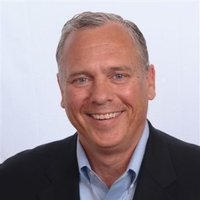Ahead of DCD>Dallas, Mike Hagan, Co-Founder & CEO, Edgemicro sat down for a Q&A with DCD’s Kisandka Moses, who is producing this year’s conference, to discuss scaling at the Edge.
Q: We've noticed that Edge data centers and Edge as a business model is becoming big business. With the likes of Vapor IO and EdgePoint by Compass Datacenters focusing their business models on building infrastructure to support low latency applications, how are you evolving and differentiating EdgeMicro from those types of companies?
A: The Edge market is definitely in the growth phase, with significant money being put into current and upcoming deployments by companies who understand the benefits of the Edge. The market is moving from the pilot phase to full scale implementation at the Edge. For those of us who have been making Edge computing a reality the past several years, it’s incredibly rewarding to see the market mature this quickly.
Each of the major Edge providers have different models to help companies deploy to the Edge. This is a reflection of how much the market has evolved. In the early days, there was so much talk about who the winners would be, uniqueness of their business model and the specifications of their data centers. That’s the fun competitive side of the tech industry, needs and solutions continue to evolve.
The Edge is not one place. It’s different things to different customers. The industry is experiencing new innovation like all new markets. Things are now moving to the growth phase. The folks at Vapor and EdgePoint are incredibly smart and deliver great solutions for their target customers. The EdgeMicro team is meeting a different market niche, and I happen to think it’s the biggest, most impactful one.
More on DCD>Dallas
-

DCD>Dallas 2019 Industry Interviews
Experts weigh in ahead of this year's fifth annual event
-

DCD>Dallas 2019 Delegate Brochure
See what you can expect onsite at the only national event for colo, cloud, telco & MSP
-

DCD>Dallas 2018 Sample Delegate List
See which senior leaders attended last year
Q: Your team has talked about “Edge colocation” as a core concept for your business. Is that the challenge you’re tackling?
A: Yes, The colocation model is the foundation for our business. But it is best we back up and talk about the “problems” providers like EdgeMicro, EdgePoint and Vapor are responsible for. We all deliver well designed data centers to meet infrastructure needs. We need to deliver more than data centers if we are going to provide real value for our customers.
Some people laugh at how much I try to simplify delivering value at the Edge, but the honest truth is deploying at the Edge can be hard. Really hard. EdgeMicro’s core philosophy is to keep our business solutions simple. Doing so is the best way to eliminate risk for EdgeMicro and for our customers. Any of the great folks at Compass EdgePoint and Vapor will back me up on this. There are unique and real challenges to Edge deployments due to the scale and location. It takes really smart people to get things right. I am proud of our team because we have stuck with our mission of keeping things simple. Doing so allows our clients to get to the Edge quickly with a foundation that they already know and understand: colocation.
Colocation at the Edge repeats a model that has worked exceedingly well for decades. It’s economically efficient and the best way to scale with speed and ease in a cost effective way.
Q:Scale is an important topic, given how many micro data centers and Edge nodes are being projected in the analyst reports that have come out over the past year or so. How is your team addressing the issue of scale so that this infrastructure can be rolled out nationwide in the US and internationally?
A: That’s the question that was at the center of our initial conversations before forming EdgeMicro. It’s one thing to solve Edge challenges for one customer in one market using a couple of micro data centers. It’s another thing to solve for needs across large geographies. It gets even more fun when companies have very different definitions of where the Edge is and what competitive advantage they are seeking. We are confident that we are on a good path as demonstrated by our current roll out in a number of US markets.
Scalability and simplicity have been our guiding principles, and our colo-style model for mass deployment is a model that meets varied needs. It works. It’s repeatable at scale. We will deliver our customers a common experience worldwide.
Q:Have there been any big surprises along the way as you’ve gotten up and running in your first markets and worked with customers on implementations?
A: Yes, definitely. Innovating is a learning process and encountering the unexpected is a way of life. Our job is to tackle obstacles and to be nimble when doing so. One of the things that was eye-opening is the amount of bandwidth needed at the Edge.
When we started the business we had voice of customer input regarding the pipeline required at the Edge. As the market has developed things have changed in very big ways. We now have multiple companies requesting up to dual 100G connectivity. That's a great reflection on the magnitude of need at the Edge. Consumer demands, both man and machine, are enormous.
There’s another key thing we’ve learned and it is critical to any company looking to go to the Edge: site selection can be incredibly complex and time-consuming. So much so, that it can derail a company’s Edge strategy if they don’t have the right approach. Our team has invested a significant amount of thought into building a process to address the issue. As you know, everybody was enamoured with the tower locations, for all the reasons we know: connectivity to mobile users is the grand prize at the Edge. What we found was that there was a need to connect everyone and everything both terrestrially and from a mobility perspective. Sometimes tower sites don’t have the available fiber connectivity required to serve needs at the Edge. We have enhanced our approach to solving this challenge by onboarding several experts from the fiber and mobile network worlds with strong relationships with people that count. We have mastered and developed powerful solutions to address real-estate and connectivity. We procure the best fiber aggregation points to guarantee we connect our customers to everything everywhere.
We married these processes together with our micro data centers into a single provider solution. When we land our micro data centers our clients install their IT gear and connect. Simple, fast and easy.
Q: Are there any locations or states, regions, or countries that come top of the list when you're looking at expansion?
A: It may be easier to start with the locations we avoid. We, avoid what I consider to be the major interconnection of points in the US, for instance, Chicago, Dallas, Ashburn, Northern California and Chicago. They are already major connectivity hubs close to critical content. The population within those areas are enjoying a pretty solid latency experience due to proximity. We target tier 2 and 3 areas where proximity to critical content and critical connectivity are lacking. Part of our site location process includes geo location and population studies. Plus, we have built a location matrix based on customer input around their target areas of need. We overlay the matrix with our data, apply our site location program and we are off to the races delivering value in the right places with velocity.
In this business speed counts. We are now well positioned for today and the future. Waiting 2-4 months for fiber providers to land in our micro data centers won’t cut it for EdgeMicro or our customers. Solving obstacles early is what we do.
Q: During a recent panel discussions at DCD>San Francisco, Dean Nelson (ex-Head of Uber Metal) announced that he'd recently changed his mind on the notion that autonomous vehicles will require Edge as he believes that a lot of the required processing will happen on the vehicle itself. Can you outline your perspective on which applications in particular will require Edge?
A: Dean and I spoke about this topic a year ago.The excitement around autonomous vehicles was big because it was easy for people to relate to. We moved autonomous vehicles to the bottom of our target list early. We focus on serving Web Giants, CDNs, Video, Gaming and Enterprise customers in phase one of our growth. Land these clients and locate them in the right places and we build a valuable home for the masses to deploy AR/VR and the billions of IoT devices that need to be connected with content and compute at the Edge.
Q: An Edge data center currently requires little to no IT personnel, meaning remote monitoring and automation will become critical to how that facility functions. In your opinion, who should be expected to manage the client's equipment? Should it be the provider or the client?
A: The remoteness of these micro data centers creates some operational challenges. First, we look at the infrastructure – power, space, cooling and air. We take direct responsibility for providing the operations & maintenance services that users demand in typical data centers. Regarding IT services like rack/stack and remote hands, we provide customer choice. So, what does that mean? If a customer has security protocols, or corporate policy where no external entity can handle their hardware we support their needs with EdgeMicro site supervisor services to guarantee everyone follows protocol to create safety for the multiple clients we serve.
Option two: Many of our clients prefer that we manage all required IT services on their behalf. We have a program to respond and deliver on any scope of work a client requires.
To wrap up on the unique needs of lights out at the Edge, we handle infrastructure operations & maintenance and IT services. We surround this with multiple levels of physical security including cameras and biometrics, we monitor our sites 24/7 via a NOC that handles site coordination, ticketing and emergency response. Everything we do aligns with what clients expect from a brick and mortar data center. We just do it in a micro environment at scale.
Q: I wanted to find out your thoughts on the role of the Edge data center in a post-carbon world? At present, the topic of the sustainable data center appears to be limited to the larger facilities. Is sustainability a key metric for EdgeMicro or a set of aims which may become more prominent in the near future?
A: We think it's very important. We are in a common place in innovation and applying sustainability the same ways we experienced over the last 20 years in the brick and mortar data center world. We are responsible now and we are pushing ourselves to improve. We are actively involved with R&D efforts to enhance our design and investigate alternative ways to power solutions.
Due to the remote location of Edge data centers there are different hurdles to overcome. I am confident that providers like EdgeMicro, Vapor, Edgepoint and others will all move towards responsible sustainability solutions collectively.
Mike will join us at DCD>Dallas on 21-22 October, to share his insights into "Do milliseconds still matter and does the Edge require core sites or small cells?"

